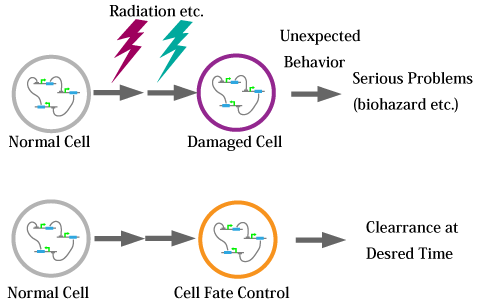Team:Kyoto/GSDD/Introduction
From 2009.igem.org
(renew introduction) |
|||
| (14 intermediate revisions not shown) | |||
| Line 10: | Line 10: | ||
<style type="text/css"> | <style type="text/css"> | ||
/* ul#navi_GSDD or ul#navi_CiC */ | /* ul#navi_GSDD or ul#navi_CiC */ | ||
| - | /* li.nav_i, li.nav_me, li.nav_g, li.nav_r, li.nav_p, li.nav_mo, li.nav_n */ | + | /* li.nav_i, li.nav_me, li.nav_g, li.nav_r, li.nav_p, li.nav_mo, li.nav_n, li.nav_mv */ |
#navigation ul#navi_GSDD li ul li.nav_i a{ | #navigation ul#navi_GSDD li ul li.nav_i a{ | ||
| Line 16: | Line 16: | ||
color:black; | color:black; | ||
} | } | ||
| - | |||
</style></html> | </style></html> | ||
<div id="topicpath"> | <div id="topicpath"> | ||
#[[Team:Kyoto|Home]] | #[[Team:Kyoto|Home]] | ||
| - | #[[Team:Kyoto/ | + | #[[Team:Kyoto/GSDD|GSDD]] |
#Introduction | #Introduction | ||
| + | {{:Team:Kyoto/topicpath}} | ||
</div><!-- /#topicpath --> | </div><!-- /#topicpath --> | ||
{{:Team:Kyoto/Leftnavi}} | {{:Team:Kyoto/Leftnavi}} | ||
| Line 27: | Line 27: | ||
<!-- ** Edit below ** --> | <!-- ** Edit below ** --> | ||
<div id="rightcontents"> | <div id="rightcontents"> | ||
| - | == | + | ==Motivation== |
| - | [[Image: | + | |
| - | + | [[Image:figure(motivation).png|480px|thumb|Fig.1]] | |
| - | + | In synthetic biology field, biologists and bioengineers design and construct a variety of gene circuits to solve their facing problems such as medical, environmental, food, and energy problems. However, it is difficult to control the lifespan of these engineered cells that contain synthetic circuits in many cases: the cells tend to repeat cell division and increase their number in the given environment. Moreover, if point mutations or deletions were introduced into such engineered cells, it may cause serious problems to the natural environment, because they may cause the unexpected behavior (biohazard) against natural living systems. This is the big issue in this field. However, it is difficult to invent an effective approach to control the cell fate of the engineered bacteria. | |
| - | However, | + | |
| - | + | For instance, several synthetic biologists aimed to regulate cell population by introducing a negative feedback loops or the other circuits in cells (REF). As a result, they could control the cell populations in some cases. However, these regulations can not precisely control the temporal gene expression depending on cell division. Thus, we aimed to design and construct a system to control the temporal gene expression depending on cell division without using the other factors (e.g., small molecules such as Tetracycline or complicated genetic circuits). | |
| - | + | ||
| - | |||
| - | |||
| - | |||
</div><!-- /#rightcontents --> | </div><!-- /#rightcontents --> | ||
Latest revision as of 02:56, 22 October 2009
Motivation
In synthetic biology field, biologists and bioengineers design and construct a variety of gene circuits to solve their facing problems such as medical, environmental, food, and energy problems. However, it is difficult to control the lifespan of these engineered cells that contain synthetic circuits in many cases: the cells tend to repeat cell division and increase their number in the given environment. Moreover, if point mutations or deletions were introduced into such engineered cells, it may cause serious problems to the natural environment, because they may cause the unexpected behavior (biohazard) against natural living systems. This is the big issue in this field. However, it is difficult to invent an effective approach to control the cell fate of the engineered bacteria.
For instance, several synthetic biologists aimed to regulate cell population by introducing a negative feedback loops or the other circuits in cells (REF). As a result, they could control the cell populations in some cases. However, these regulations can not precisely control the temporal gene expression depending on cell division. Thus, we aimed to design and construct a system to control the temporal gene expression depending on cell division without using the other factors (e.g., small molecules such as Tetracycline or complicated genetic circuits).
 "
"
